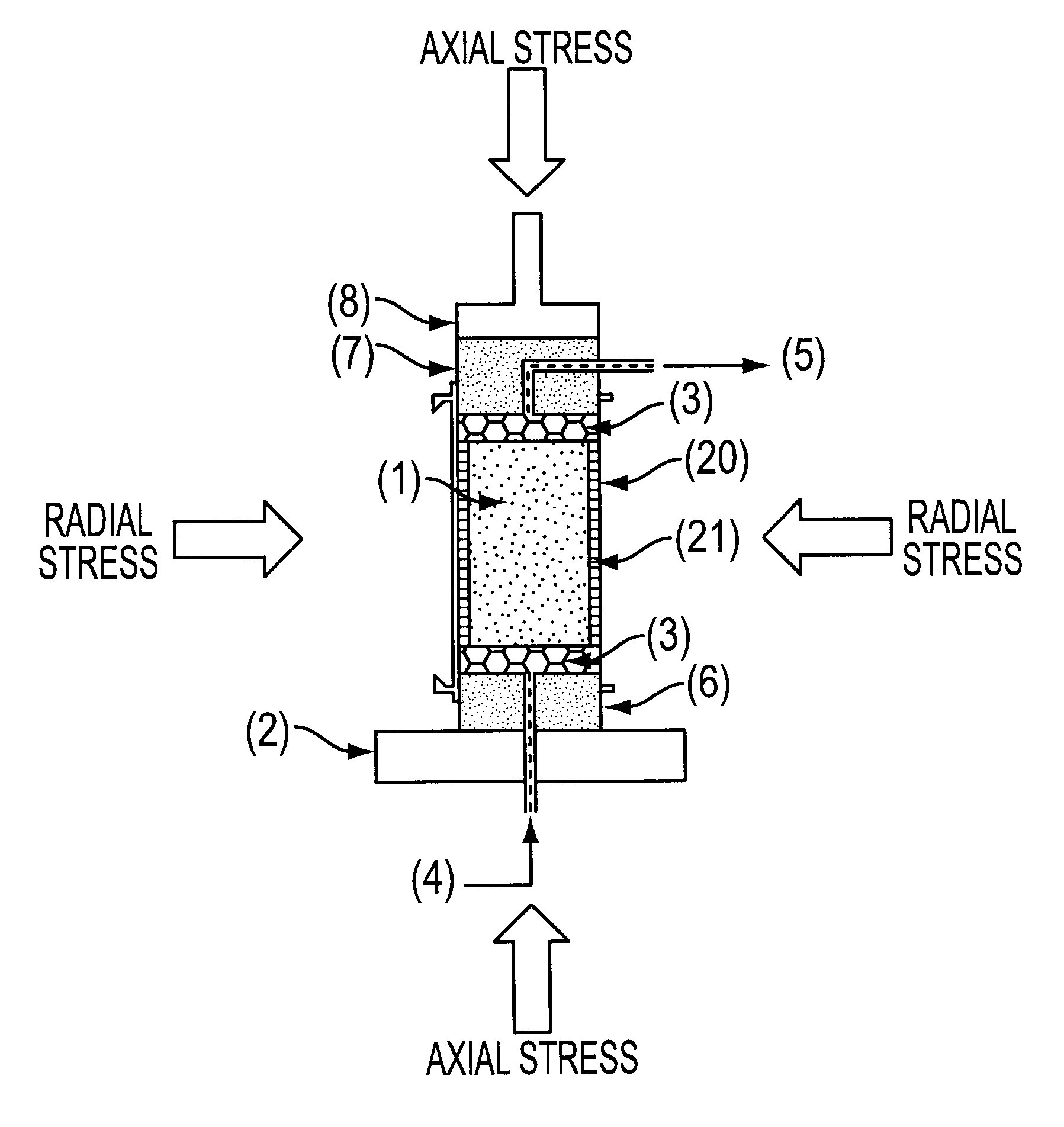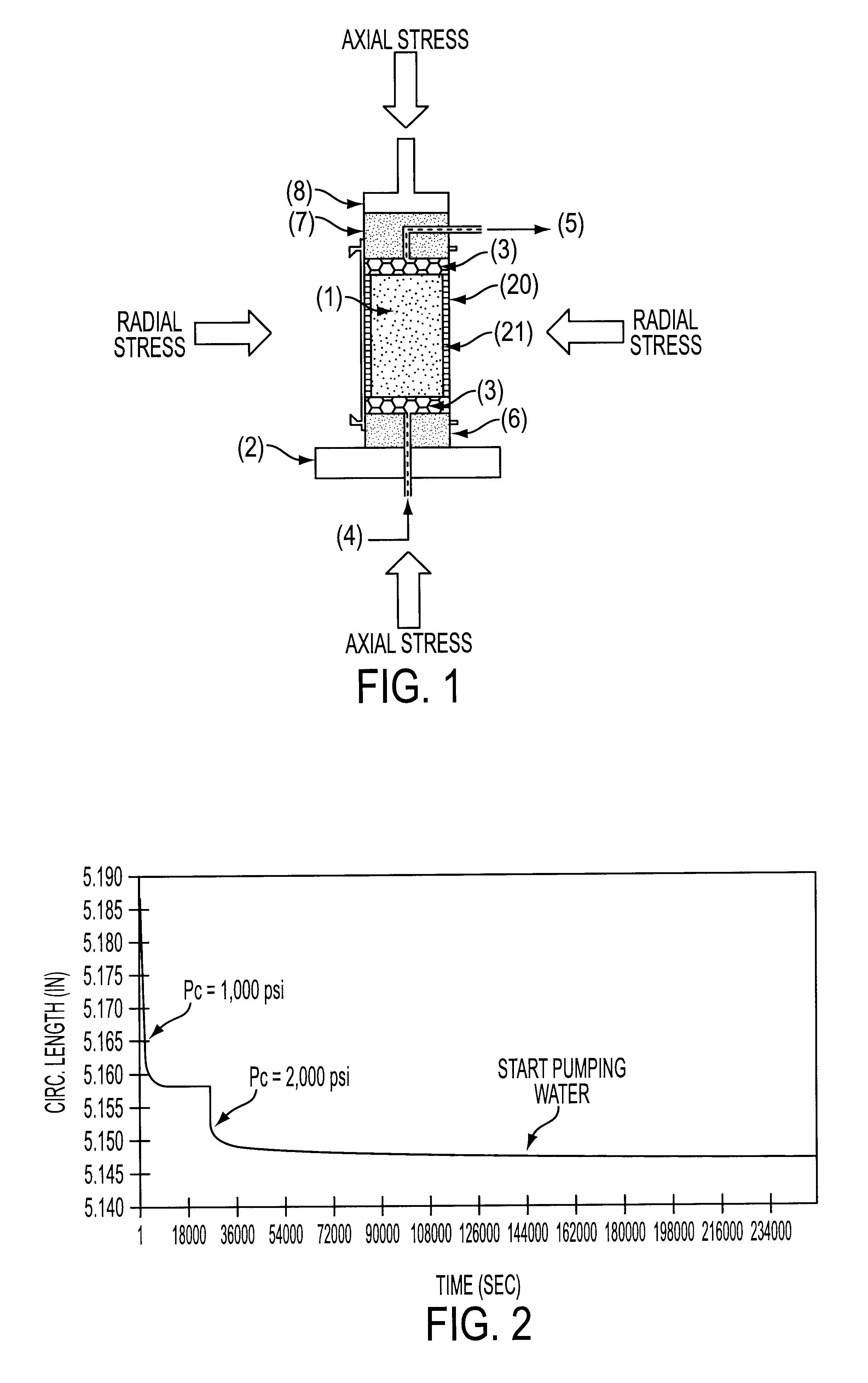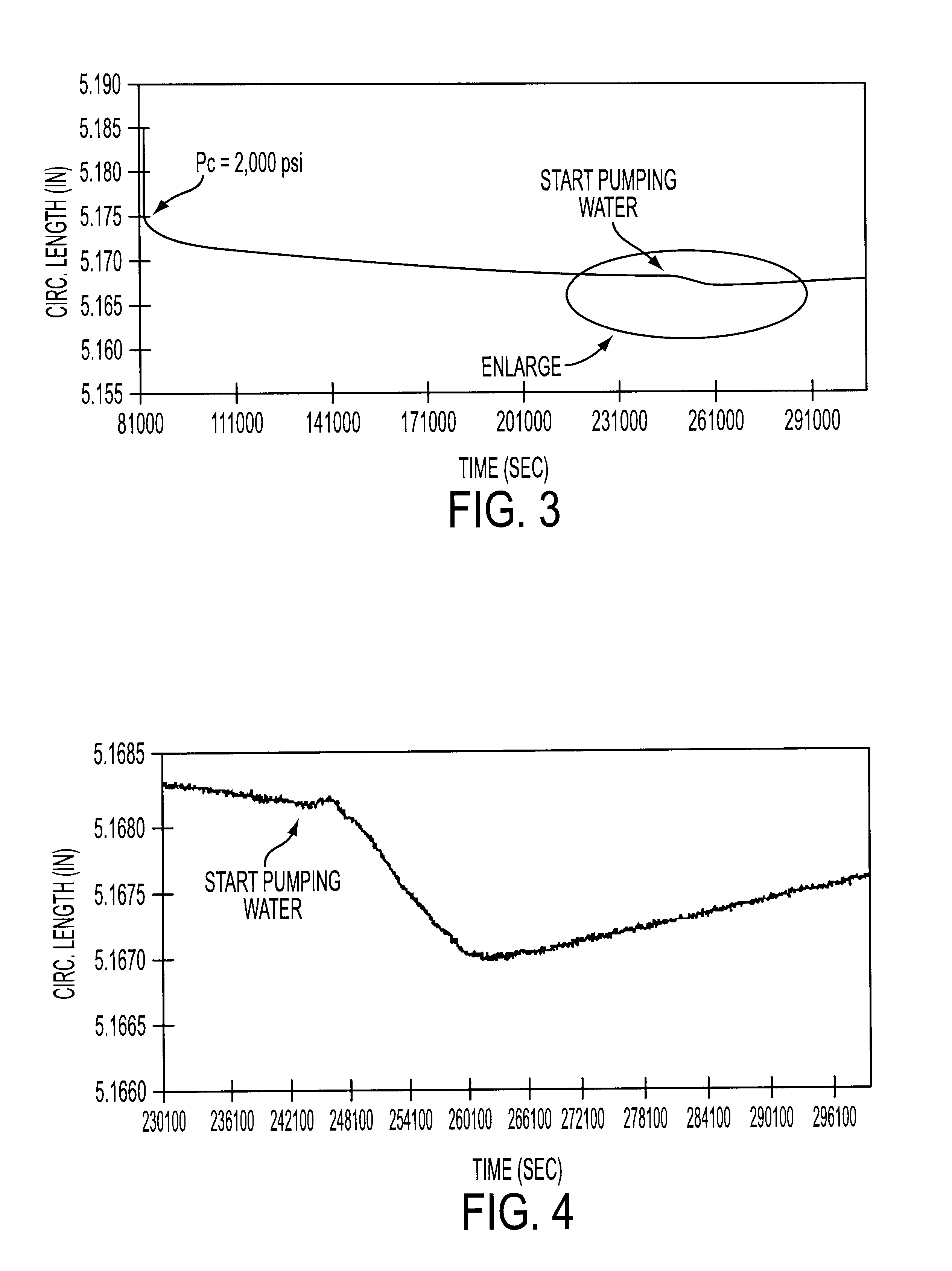Method for the evaluation of shale reactivity
a shale reactivity and reactivity technology, applied in the field of shale reactivity reactivity evaluation, can solve the problems of difficult to obtain or maintain sample integrity, difficult to absorb water and swell, complex shale,
- Summary
- Abstract
- Description
- Claims
- Application Information
AI Technical Summary
Problems solved by technology
Method used
Image
Examples
example 1
This is a control Example, carried out on a standard aluminum sample. A test sample made of aluminum instead of rock is used, having the dimensions of a test plug of shale sample. As the aluminum is inert to the test fluids, this Example aims at measuring all system deformations and verify the performance of the permeable sleeve and the rubber sleeve under the proposed procedure. The test was carried out in exactly the same way as with a plug of shaly rock in a test setup as illustrated in FIG. 1. As expected, when de-ionized water is flowed around the aluminum sample, displacing the mineral oil, no reaction occurs. The permeable sleeve and rubber sleeve deformation as a function of confining pressure and time were also recorded. Only the radial deformations are presented herein. FIG. 2 shows the plot of circumferential length as a function of time. Deformation is quickly stabilized after each increase in confining pressure, because the aluminum sample has no porosity. Therefore, no...
example 2
This is another control Example, which reflects the situation of a test plug of shale sample prepared for test according to the state-of-the-art technique, that is, the sample is partially dried before testing. The test plug was prepared from a North Sea reddish shale which presented a strong reaction when immersed in de-ionized water under atmospheric pressure as well as under pressure. FIG. 3 illustrates the behavior of this sample under pressure. As soon as the test plug is made to contact water, displacing the mineral oil, the deformation rate starts to change: initially the sample shrinks, and after some time it starts to expand. As can be seen in FIG. 4, at first the test plug expands due to the swelling pressures generated. However, as the reaction with water proceeds, the shaly rock being tested weakens. This weakening or loss of strength under confining pressure leads to a new consolidation of the sample, causing further shrinkage. The swelling mechanisms are not sufficient...
example 3
This Example aims at presenting strong evidence that the principles of the present invention represent a true picture of the reaction of shales and fluids under a downhole condition.
FIGS. 5 and 6 appended fully illustrate these principles since they depict experiments carried out on test plugs from the same shaly sample, prepared for the reactivity test according to the principles of the present invention in one experiment (FIG. 5) and according to state-of-the-art techniques in another experiment (FIG. 6).
FIG. 5 is a graph of the deformations undergone by a truly preserved shale sample according to the concept of the present invention. A plug of such a sample when submitted to the action of water did not show any variation in dimensions. This is possible only because up to the moment where the water contacts the sample, it is preserved from the contact with air by the layer of mineral oil surrounding the sample. The absence of reaction of a shaly sample with water is unknown in the...
PUM
| Property | Measurement | Unit |
|---|---|---|
| pressure | aaaaa | aaaaa |
| temperature | aaaaa | aaaaa |
| temperature | aaaaa | aaaaa |
Abstract
Description
Claims
Application Information
 Login to View More
Login to View More - R&D
- Intellectual Property
- Life Sciences
- Materials
- Tech Scout
- Unparalleled Data Quality
- Higher Quality Content
- 60% Fewer Hallucinations
Browse by: Latest US Patents, China's latest patents, Technical Efficacy Thesaurus, Application Domain, Technology Topic, Popular Technical Reports.
© 2025 PatSnap. All rights reserved.Legal|Privacy policy|Modern Slavery Act Transparency Statement|Sitemap|About US| Contact US: help@patsnap.com



